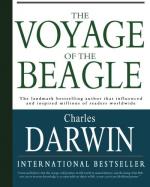
|
| Name: _________________________ | Period: ___________________ |
This test consists of 15 multiple choice questions and 5 short answer questions.
Multiple Choice Questions
1. What is an important occupation for the gauchos?
(a) carrying the mail
(b) breaking horses
(c) making whisky
(d) trapping pumas
2. Where does Darwin stay at Socego?
(a) in makeshift tents
(b) the Mandetiba inn
(c) the estate of Manuel Figuireda
(d) with native Indians
3. What has Darwin observed on the ship that lets out silk into the wind and takes flight over the ocean?
(a) sea gulls
(b) spiders
(c) silkworms
(d) beetles
4. Sailing away from Rio de Janeiro, what does Darwin see?
(a) hundreds of porpoises
(b) shark infested waters
(c) a pod of whales
(d) giant squid
5. After leaving Las Minas, what does Darwin see near marble outcroppings?
(a) kangaroos and wallabies
(b) giant land turtles
(c) pygmie hippopotamuses
(d) large flocks of ostriches roaming the land
6. What does Darwin do during his three-day stay in Socego?
(a) catch up on his sleep
(b) collects insects within the forest
(c) go hungry
(d) climbs trees
7. Why does sea salt work better than lake salt as a preservative?
(a) Sea salt contains more sodium chloride.
(b) Sea salt contains other chemicals that aid in preservation.
(c) Sea salt is purer than lake salt.
(d) Sea salt is more plentiful.
8. What are the only two insects Darwin locates on St. Paul's Rocks?
(a) grasshoppers and flies
(b) ticks and fleas
(c) moths and ants
(d) spiders and parasites brought in on the birds
9. What animal does Darwin find in small herds after arriving at Port Desire?
(a) the guanaco, rarely seen to the north, is abundant
(b) the llama, rarely seen outside of Peru
(c) the bizcacha, in communal burrows
(d) the deer, usually found in jungles
10. What are the dates of Charles Darwin's life span?
(a) Jan. 6, 1818 to Dec. 3, 1900
(b) May 14, 1850 to June 19, 1922
(c) Feb. 12, 1809 to April 19, 1882
(d) Aug. 12, 1829 to Feb. 20, 1903
11. What are two important items used by the gauchos?
(a) rifles and bows
(b) knives and pistols
(c) blow guns and spears
(d) the lazo (lasso) and the bola
12. Who does Darwin encounter in the village of Las Minas?
(a) some bandits
(b) the Incas
(c) the military
(d) the gauchos
13. What is Darwin told about climatic events in the area?
(a) drought followed by floods
(b) heatwaves and cold spells
(c) tidal waves and cyclones
(d) rainfall changes in the course of rivers
14. Why can two dead monkeys not be shaken out of a tree?
(a) they are wedged in the branches
(b) the grip of their large hands
(c) the grip of their prehensile tails
(d) they are held by other monkeys
15. What is the guanaco Darwin sees on the way to the Sauce military outpost?
(a) a large bird like a condor
(b) the wild version of the domesticated llama
(c) a black toad with a red underbelly
(d) an extremely large lizard
Short Answer Questions
1. Who invites Darwin to visit an estate near Rio de Janeiro?
2. What does Darwin find while exploring Cape de Verd?
3. Where does Darwin see camphor, pepper, cinnamon and clove trees, along with breadfruit, jaca and mango?
4. What is a particular riding skill of a gaucho?
5. What is Darwin's profession?
|
This section contains 574 words (approx. 2 pages at 300 words per page) |

|




